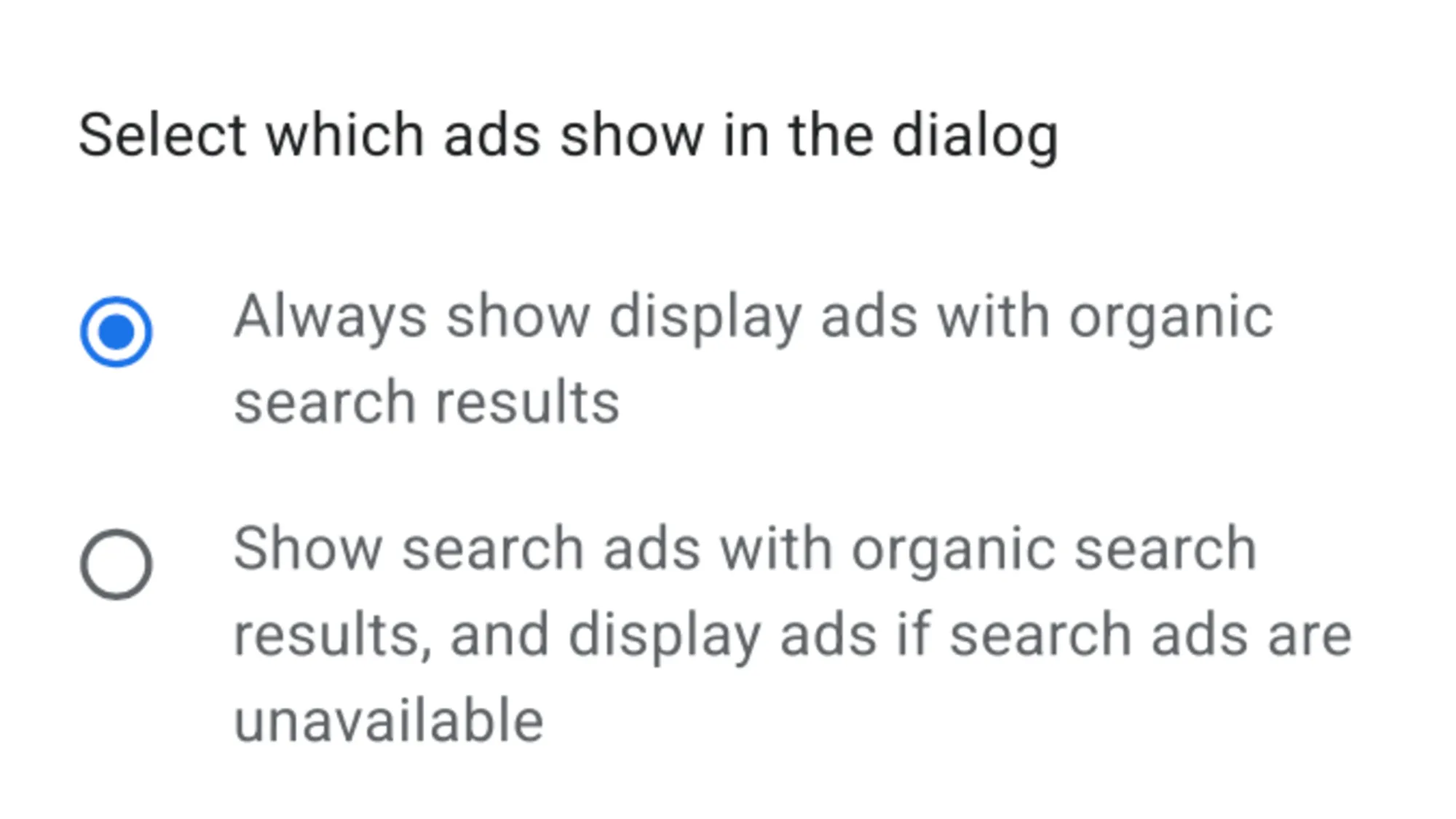Google expands display options for AdSense ad intents format
Google introduced display ads to ad intents May 21, giving publishers new monetization options alongside search results.

Google yesterday introduced new display advertising capabilities to its ad intents format, marking a significant expansion of monetization options for website publishers using the AdSense platform. The update announced on May 21, 2025, allows publishers to choose between showing display advertisements within ad intents or maintaining the existing search ads with display backup configuration.
According to Google AdSense documentation, "You can now choose to either show display ads in your ad intents, or search ads with display ads as backup when search ads aren't available." The technology giant has implemented this change as an automatic setting adjustment for existing users, defaulting their configurations to search ads with organic results.
The ad intents format represents a sophisticated content integration system that transforms website text into interactive advertising opportunities. According to the official documentation, "Ad intents is an intent-driven format that places links, anchors, and chips showing organic search results with ads into existing text and pages on your site related to your content." This system operates by automatically scanning website pages to identify commercial opportunities within existing content.
The technical implementation involves three distinct placement mechanisms. Google's system converts existing text into clickable links, positions anchors typically at page bottoms, and inserts chips at paragraph endings. When users interact with any of these elements, a dialog box opens displaying both organic search results and relevant advertisements. This approach maintains user engagement while creating new revenue streams for publishers.
Publishers can now access display advertising through a straightforward configuration process within their AdSense accounts. The setup requires enabling Auto ads, selecting the ad intents checkbox under Intent-driven formats, and choosing display ad preferences in Advanced settings. Publishers selecting display ads receive what Google terms "the AdSense for content revenue share" when users click advertisements within the dialog interface.
The revenue structure differentiates between advertisement types, creating distinct earning opportunities for publishers. According to Google's revenue documentation, "For display ads you receive the AdSense for content revenue share. For search ads you receive 51% of the revenue recognized by Google." This dual-track system allows publishers to optimize their monetization strategy based on content type and user behavior patterns.
Technical requirements for ad intents implementation remain consistent with existing AdSense policies. Google specifies that pages must contain sufficient commercial text content to generate relevant advertising opportunities. Content-rich pages typically generate more targeted advertisements, resulting in improved performance metrics for publishers. The system includes automated safeguards to prevent inappropriate content suggestions and maintains alignment with Google's quality guidelines.
The artificial intelligence powering ad intents analyzes page content to understand user intent and generate contextually relevant advertising opportunities. This approach eliminates dependency on third-party cookies while maintaining advertising effectiveness. The system functions without requiring publishers to modify website layouts or add additional advertisement units to their pages.
For marketing professionals, this development signals Google's continued focus on contextual advertising solutions in response to evolving privacy regulations. The expansion of display advertising options within ad intents provides publishers with additional revenue diversification opportunities while maintaining user experience standards. Marketing teams managing multiple revenue streams can now optimize between search-based and display-based monetization strategies depending on content performance.
Revenue tracking capabilities enable publishers to monitor performance across different advertisement formats through AdSense reporting tools. Publishers can create custom reports segmented by advertisement format and analyze earnings from display versus search advertisements. This granular reporting allows for data-driven optimization of advertising strategies across different content types and user segments.
The implementation timeline varies for individual publishers, with Google noting that ad intents may not appear immediately after activation. This gradual rollout allows the system to analyze content patterns and optimize placement algorithms for maximum effectiveness. Publishers can monitor implementation progress through their AdSense dashboard while tracking performance metrics as the system becomes fully operational.
Google emphasizes content quality remains paramount for successful ad intents implementation. The documentation warns against artificially adding keywords or excessive commercial mentions solely to trigger more advertising opportunities. This guidance aligns with Google's broader content quality standards and maintains the integrity of the user experience while supporting legitimate monetization efforts.
The technical architecture supports both personalized and non-personalized advertising delivery depending on user consent status and regional privacy requirements. This flexibility enables publishers to maintain compliance with various international privacy regulations while maximizing revenue opportunities across different user segments and geographic markets.
For publishers operating in multiple markets, the new display advertising options provide additional flexibility in addressing diverse audience preferences and regulatory requirements. The system automatically adapts to regional advertising standards while maintaining consistent performance metrics across different geographic regions and user demographics.
Publishers can experiment with different advertising configurations to optimize performance for their specific audience characteristics. The system supports A/B testing approaches by allowing publishers to switch between display-only and mixed advertising modes. This capability enables data-driven decision making for publishers seeking to maximize revenue while maintaining user satisfaction levels.
The update represents part of Google's broader strategy to enhance publisher monetization tools while adapting to changing digital advertising landscape requirements. By expanding advertising format options within existing systems, Google provides publishers with additional revenue opportunities without requiring significant technical implementations or website modifications.
Timeline
May 21, 2025: Google introduces display ads option for ad intents format, allowing publishers to choose between display-only or mixed search/display configurations in AdSense.
Related developments
May 16, 2025: Google eliminates European AdSense privacy controls, requiring publishers to implement code-based solutions for non-personalized advertising.
April 21, 2025: Google modifies search ad positioning, allowing advertisers to appear in multiple positions simultaneously on search results pages.
November 14, 2024: Google launches collapsible anchor ads for mobile devices, enhancing ad visibility while maintaining user control.
April 16, 2024: Google initially unveils ad intents format, introducing AI-powered contextual advertising integration for publishers.

